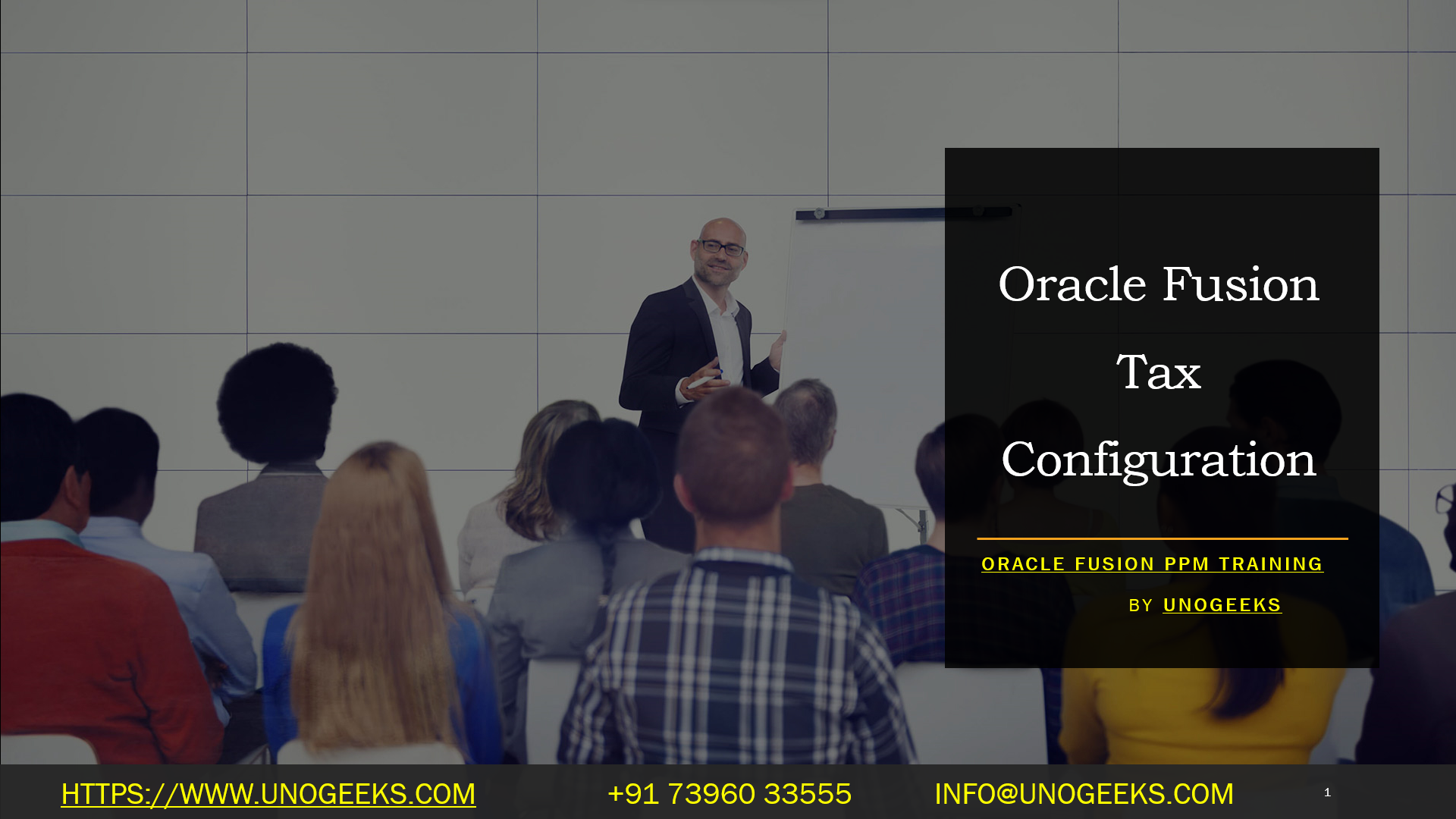Oracle Fusion Tax Configuration
Oracle Fusion Tax Configuration
I can provide you with information on configuring Oracle Fusion Tax. Oracle Fusion Tax is a module within Oracle Cloud Applications that allows organizations to manage their tax-related processes. Configuring it correctly is essential to ensure accurate taxation for your business transactions.
To configure Oracle Fusion Tax, follow these general steps:
Access Tax Configuration:
- Log in to your Oracle Fusion instance.
- Navigate to the “Setup and Maintenance” work area.
Search for Tax Configuration:
- In the “Setup and Maintenance” work area, use the search bar to find the task related to tax configuration. You might search for terms like “Manage Tax Configuration” or similar.
Define Tax Regimes:
- Tax regimes define the tax authorities, tax rates, and tax rules that apply to your business. Create and configure tax regimes based on your business needs.
Define Tax Jurisdictions:
- Tax jurisdictions specify the geographical areas where taxes apply. Configure tax jurisdictions based on your business locations.
Define Tax Types:
- Tax types categorize different types of taxes such as sales tax, value-added tax (VAT), etc. Create and configure tax types according to your tax requirements.
Define Tax Statuses:
- Tax statuses represent the tax status of your transactions (e.g., taxable, non-taxable). Configure tax statuses based on your business needs.
Define Tax Rules:
- Tax rules define how taxes are calculated and applied to transactions. Create and configure tax rules to ensure accurate taxation.
Configure Tax Codes:
- Tax codes are used to map transactions to specific taxes. Define tax codes and associate them with the appropriate tax rules and tax types.
Test and Validate:
- Before using the tax configuration in your production environment, thoroughly test and validate it in a test environment to ensure it works as expected.
Deploy to Production:
- Once you are confident in your tax configuration, deploy it to your production environment.
Monitor and Maintain:
- Regularly monitor your tax configuration and make necessary updates to reflect changes in tax laws, regulations, or business needs.
Documentation and Training:
- Ensure that your tax team is well-trained on how to use the configured tax setup, and maintain comprehensive documentation for reference.
ORACLE FUSION PPM Training Demo Day 1 Video:
Conclusion:
Unogeeks is the No.1 IT Training Institute for ORACLE FUSION PPM Training. Anyone Disagree? Please drop in a comment
You can check out our other latest blogs on ORACLE FUSION PPM Training here – Fusion PPM Blogs
Please check out our Best In Class ORACLE FUSION PPM Training Details here – Fusion PPM Training
Follow & Connect with us:
———————————-
For Training inquiries:
Call/Whatsapp: +91 73960 33555
Mail us at: info@unogeeks.com
Our Website ➜ https://unogeeks.com
Follow us:
Instagram: https://www.instagram.com/unogeeks
Facebook:https://www.facebook.com/UnogeeksSoftwareTrainingInstitute
Twitter: https://twitter.com/unogeeks
